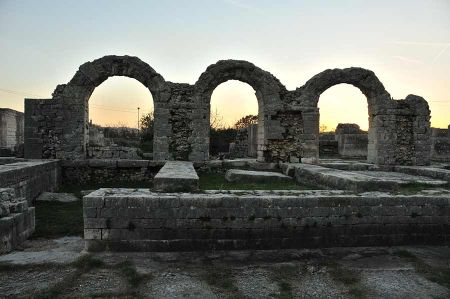Salona - next destination of our tour along Roman road system
- Written by Portal Editor
For several years now, Split has been a popular summer tourism destination in Croatia again, but our travel points with Salona, Klis Castle and Deocletian's Palace in Split were significantly removed from it, and not just seasonally.
Who goes to Split at the end of November? Well, we're just looking for the traces of the Romans and for what the local authorities and organizations are now using for tourism or, to show the opposite in many places, what has so far been unused and could be used for tourism to "make a living" for the local population and at the same time preserve and protect cultural assets.
Robert is also a state-trained tour guide
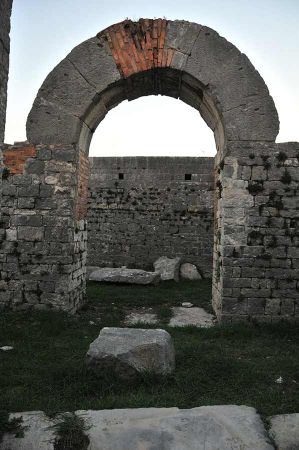 Against this background, we contacted Robert Bralic in Solin months ago, who developed an almost "alternative" travel and offer concept for archaeological and culinary destinations in Split in order to refer to the existing historical heritage, at the same time to use local specialties, in which wine seminars or olive oil seminars, for example, form the basis for explanations of the origin and production of these natural products. Since Robert is also a state-trained tour guide and, as it turned out, also an absolute expert on the cultural and historical history of his hometown, we found in him the ideal city guide who showed us the area around Split, the ancient town of Salona and of course the Deocletian's Palace in Split could be explained in its historical context.
Against this background, we contacted Robert Bralic in Solin months ago, who developed an almost "alternative" travel and offer concept for archaeological and culinary destinations in Split in order to refer to the existing historical heritage, at the same time to use local specialties, in which wine seminars or olive oil seminars, for example, form the basis for explanations of the origin and production of these natural products. Since Robert is also a state-trained tour guide and, as it turned out, also an absolute expert on the cultural and historical history of his hometown, we found in him the ideal city guide who showed us the area around Split, the ancient town of Salona and of course the Deocletian's Palace in Split could be explained in its historical context.
But first we had to manage the journey from Staranzano to Split. So we initially went on side roads to Trieste. We had researched on the Internet that there should be a scenic route from Trieste via Basovizza and Kozina to Rupa, which leads via Slovenia to the motorway connection to Rijeka. Since neither motorway nor expressway is used on this short section, it was supposedly toll-free. There were some Italian customs officers on duty directly at the border crossing from Italy to Slovenia, whom we asked again as a precaution about the vignette-free crossing of Slovenian territory: that's right, no vignette requirement on the E61!
On the site of an olive oil production facility
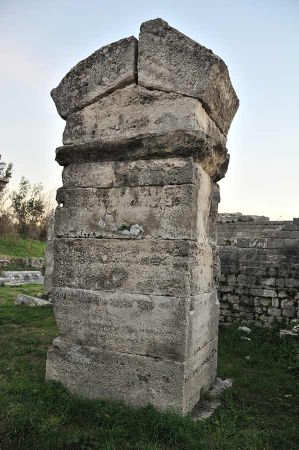 From Rupa we took the highway to Split or the suburb of Solin. We were amazed when the nice gentleman at the ticket booth charged an impressive €38 for the journey from Rupa to Split for 456 kilometres. That's probably why there was hardly any traffic on the route. We spoke to Robert on the phone, who then told us to wait for him at a bridge. A bit obscure at first, he then directed us to the site of an olive oil production facility, which, as it turned out, was his family business. Our location for the next few days. In addition to electricity and fresh water, there was a separate shower in the bathroom that we could use. He also generously made his office available to us. It couldn't have been better.
From Rupa we took the highway to Split or the suburb of Solin. We were amazed when the nice gentleman at the ticket booth charged an impressive €38 for the journey from Rupa to Split for 456 kilometres. That's probably why there was hardly any traffic on the route. We spoke to Robert on the phone, who then told us to wait for him at a bridge. A bit obscure at first, he then directed us to the site of an olive oil production facility, which, as it turned out, was his family business. Our location for the next few days. In addition to electricity and fresh water, there was a separate shower in the bathroom that we could use. He also generously made his office available to us. It couldn't have been better.
In the evening there were brief explanations about the urban development of Solin and the surrounding area, because early the next morning we were supposed to go on our first sightseeing tour to Klis Castle.
Salona became Solin
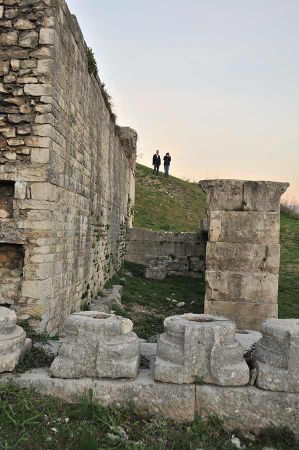 In ancient times, Solin was significantly more important than today's small town. Originally a fortified port city of the Illyrian Delmatians, Salona, as the city was called in ancient times, was founded in the 4th century BC. It was taken by the Greeks in the 1st century BC, who came to terms with the Illyrians and traded. The city had a strategic position on the Jadro River, lying at the crossroads of important Illyrian trade routes between the coastal road and a route leading inland via the Klis Gorge.
In ancient times, Solin was significantly more important than today's small town. Originally a fortified port city of the Illyrian Delmatians, Salona, as the city was called in ancient times, was founded in the 4th century BC. It was taken by the Greeks in the 1st century BC, who came to terms with the Illyrians and traded. The city had a strategic position on the Jadro River, lying at the crossroads of important Illyrian trade routes between the coastal road and a route leading inland via the Klis Gorge.
Julius Caesar conquered Salona in the mid-1st century BC. B.C. to the rank of a Roman colony (Colonia Martia Iulia Salona) and made it the administrative centre of the entire province of Illyria (later Dalmatia). The Roman Emperor Diocletian, who himself probably came from the area around Salona, gave the city the emperor's family name: "Valeria" as an honorary title. The last legitimate Western Roman Emperor Julius Nepos resided here from 475 to 480. But more about Roman times later.
Between the 4th and 6th centuries, Salona was an important centre of early Christianity in Europe, as evidenced by many archaeological sites and contacts with Aquileia. In addition to the already official Roman religion, many different religious communities lived side by side in ancient Salona, mostly peacefully: followers of various oriental religions who worshiped Isis and Cybele, the Jewish religious community, but also the followers of the sun god Mithras, whose places of worship were found in several places in Salona became.
To reorganize the church in Salona
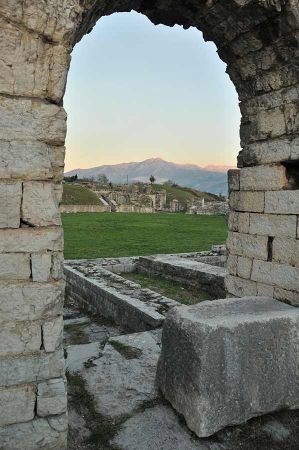 The Christian religious community had already developed in Salona from the 3rd century, which is also connected with the Salonite bishop Venancije (Latin: Venantius Martyr), who came from Rome to spread the Christian faith in the province and to establish the church in To reorganize Salona. During the reign of Diocletian (284 - 305), his successor, Bishop Domnius, who originally came from Syria, lost his life during the persecution of Christians in 304. Many other Christians were tortured and executed with him, including Anastasius, the priest Asterius and four soldiers from Diocletian's body guard (Antiohan, Gaian, Telij and Paulinian).
The Christian religious community had already developed in Salona from the 3rd century, which is also connected with the Salonite bishop Venancije (Latin: Venantius Martyr), who came from Rome to spread the Christian faith in the province and to establish the church in To reorganize Salona. During the reign of Diocletian (284 - 305), his successor, Bishop Domnius, who originally came from Syria, lost his life during the persecution of Christians in 304. Many other Christians were tortured and executed with him, including Anastasius, the priest Asterius and four soldiers from Diocletian's body guard (Antiohan, Gaian, Telij and Paulinian).
In 313, Emperor Constantine granted all Christians the right to freely practice their religion with the Agreement of Milan. One of his successors, Theodosius I, made Christianity the state religion at the end of the 4th century and passed laws against paganism and Christian heresies. These changes affected the development of the city. The centre of Salona was moved to the east, where an episcopal centre emerged in the 5th century, with a double basilica, a baptismal church and a bishop's palace. At the beginning of the 5th century, the Salonite bishop became metropolitan of Dalmatia. Two important ecclesiastical meetings of all Dalmatian bishops were held in Salona in the years 530 and 533. After the division of the empire in 395, the province of Dalmatia passed to the Western Roman Empire, and after its final collapse in 476, Dalmatia belonged to the kingdom of Odoakar.
At the peak of development, the city is said to have had around 60,000 inhabitants. At the end of the 5th century, Salona became part of the Ostrogothic Empire under Theodoric. In 535, the Eastern Roman general Mundus conquered the city for Emperor Justinian.
After that, Salona lost its importance
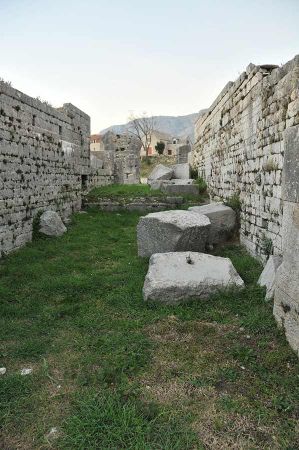 In the early 7th century, Salona was conquered by the Avars and Slavs. None of the known contemporary sources report the fall of the Dalmatian metropolis. Around 600, Pope Gregory was still in contact with the city to resolve an ecclesiastical dispute. According to coin finds and the interpretation of later sources, Salona may have fallen between 611 and 626. In 640/41, prisoners from Dalmatia were ransomed, which suggests that the conquest took place at a later date. Afterwards, Salona lost its importance to the neighbouring and up-and-coming city of Split. From around the middle of the 7th century, the population had almost completely moved there.
In the early 7th century, Salona was conquered by the Avars and Slavs. None of the known contemporary sources report the fall of the Dalmatian metropolis. Around 600, Pope Gregory was still in contact with the city to resolve an ecclesiastical dispute. According to coin finds and the interpretation of later sources, Salona may have fallen between 611 and 626. In 640/41, prisoners from Dalmatia were ransomed, which suggests that the conquest took place at a later date. Afterwards, Salona lost its importance to the neighbouring and up-and-coming city of Split. From around the middle of the 7th century, the population had almost completely moved there.
So much for the first historical details and background, which should continuously expand into an overall picture over the next few days, which should also include getting to know interesting people from the region.
Please read as well:
Aramaic Christians in Türkiye are receiving their own schooling
Early romantic park at the moated castle of Lütetsburg
-
 Salona - Roman Amphitheatre Split
Salona - Roman Amphitheatre Split
Salona - Roman Amphitheatre Split
Salona - Roman Amphitheatre Split
-
 Salona - Roman Amphitheatre Split
Salona - Roman Amphitheatre Split
Salona - Roman Amphitheatre Split
Salona - Roman Amphitheatre Split
-
 Salona - Roman Amphitheatre Split
Salona - Roman Amphitheatre Split
Salona - Roman Amphitheatre Split
Salona - Roman Amphitheatre Split
-
 Salona - Roman Amphitheatre Split
Salona - Roman Amphitheatre Split
Salona - Roman Amphitheatre Split
Salona - Roman Amphitheatre Split
-
 Salona - Roman Amphitheatre Split
Salona - Roman Amphitheatre Split
Salona - Roman Amphitheatre Split
Salona - Roman Amphitheatre Split
-
 Salona - Roman Amphitheatre Split
Salona - Roman Amphitheatre Split
Salona - Roman Amphitheatre Split
Salona - Roman Amphitheatre Split
-
 Salona - Roman Amphitheatre Split
Salona - Roman Amphitheatre Split
Salona - Roman Amphitheatre Split
Salona - Roman Amphitheatre Split
-
 Salona - Roman Amphitheatre Split
Salona - Roman Amphitheatre Split
Salona - Roman Amphitheatre Split
Salona - Roman Amphitheatre Split
-
 Salona - Roman Amphitheatre Split
Salona - Roman Amphitheatre Split
Salona - Roman Amphitheatre Split
Salona - Roman Amphitheatre Split
-
 Salona - Roman Amphitheatre Split
Salona - Roman Amphitheatre Split
Salona - Roman Amphitheatre Split
Salona - Roman Amphitheatre Split
-
 Salona - Roman Amphitheatre Split
Salona - Roman Amphitheatre Split
Salona - Roman Amphitheatre Split
Salona - Roman Amphitheatre Split
-
 Salona - Roman Amphitheatre Split
Salona - Roman Amphitheatre Split
Salona - Roman Amphitheatre Split
Salona - Roman Amphitheatre Split
-
 Salona - Roman Amphitheatre Split
Salona - Roman Amphitheatre Split
Salona - Roman Amphitheatre Split
Salona - Roman Amphitheatre Split
-
 Salona - Roman Amphitheatre Split
Salona - Roman Amphitheatre Split
Salona - Roman Amphitheatre Split
Salona - Roman Amphitheatre Split
-
 Salona - Roman Amphitheatre Split
Salona - Roman Amphitheatre Split
Salona - Roman Amphitheatre Split
Salona - Roman Amphitheatre Split
https://www.alaturka.info/en/croatia/split/6298-salona-next-destination-of-our-tour-along-roman-road-system#sigProIdb3a3c27ab1
